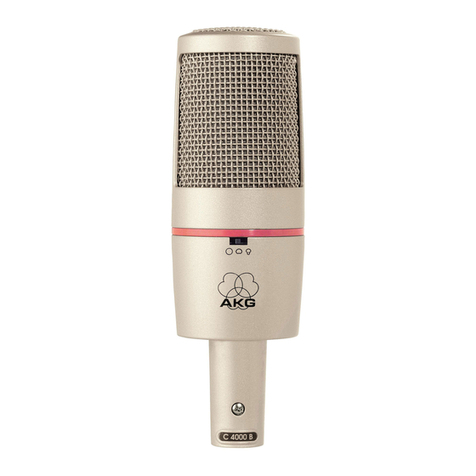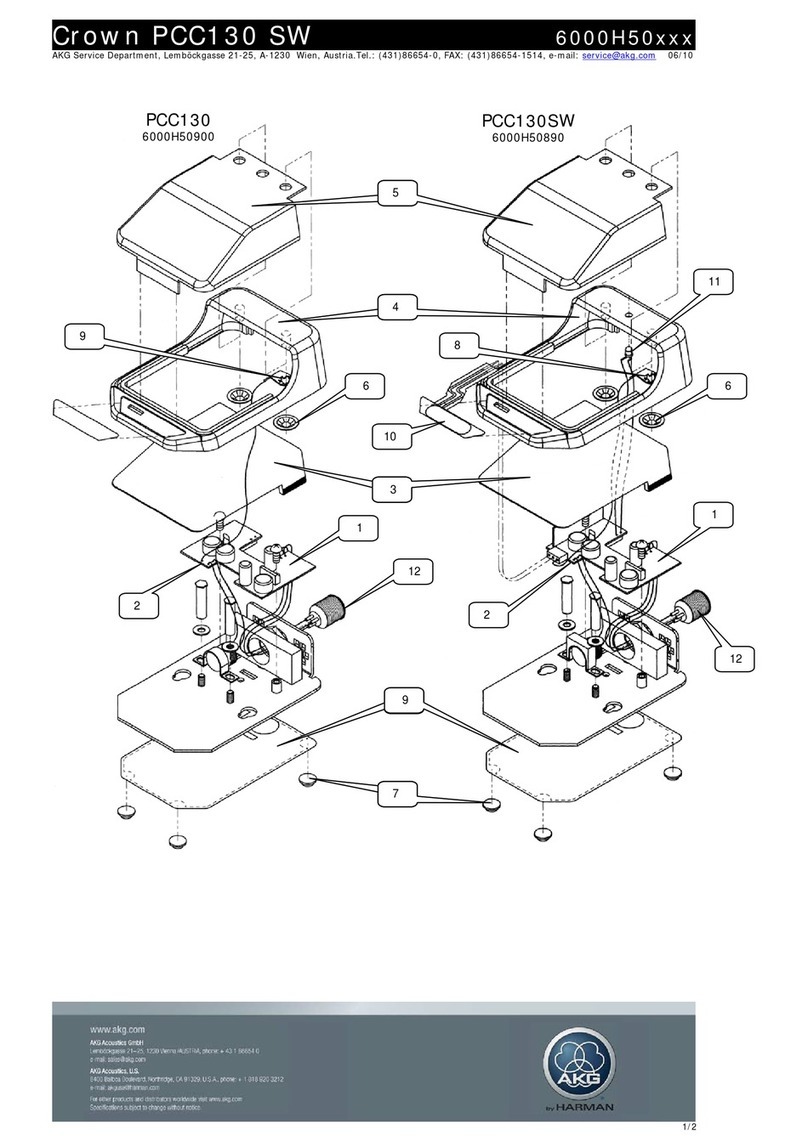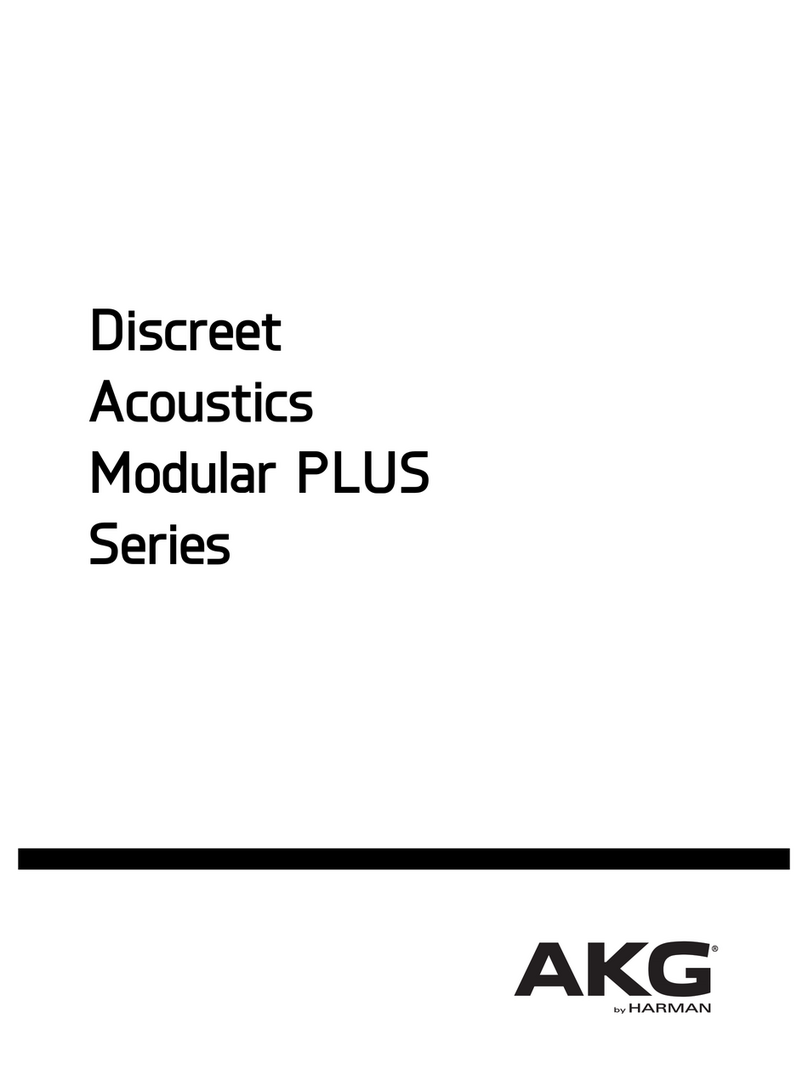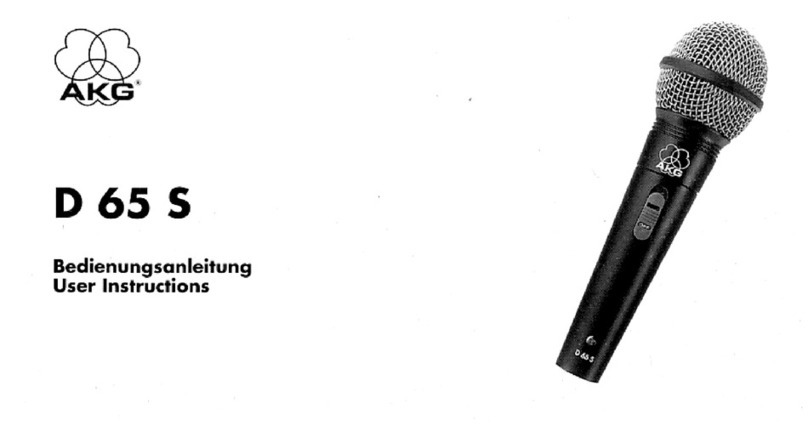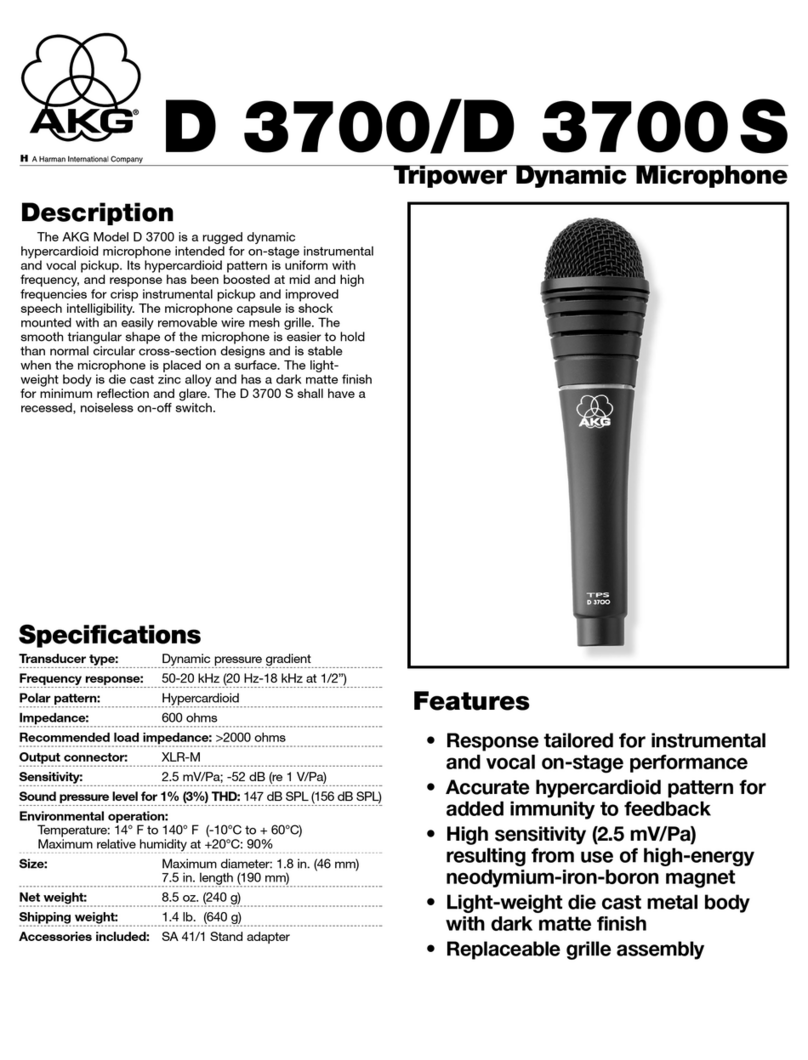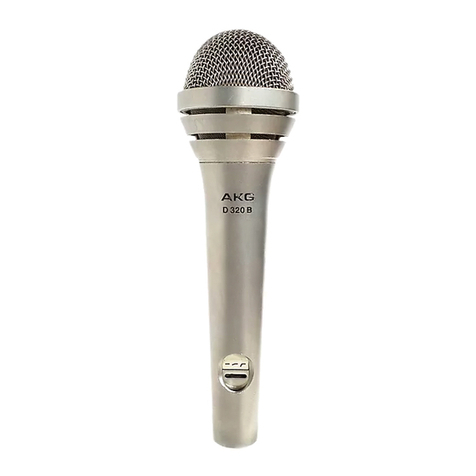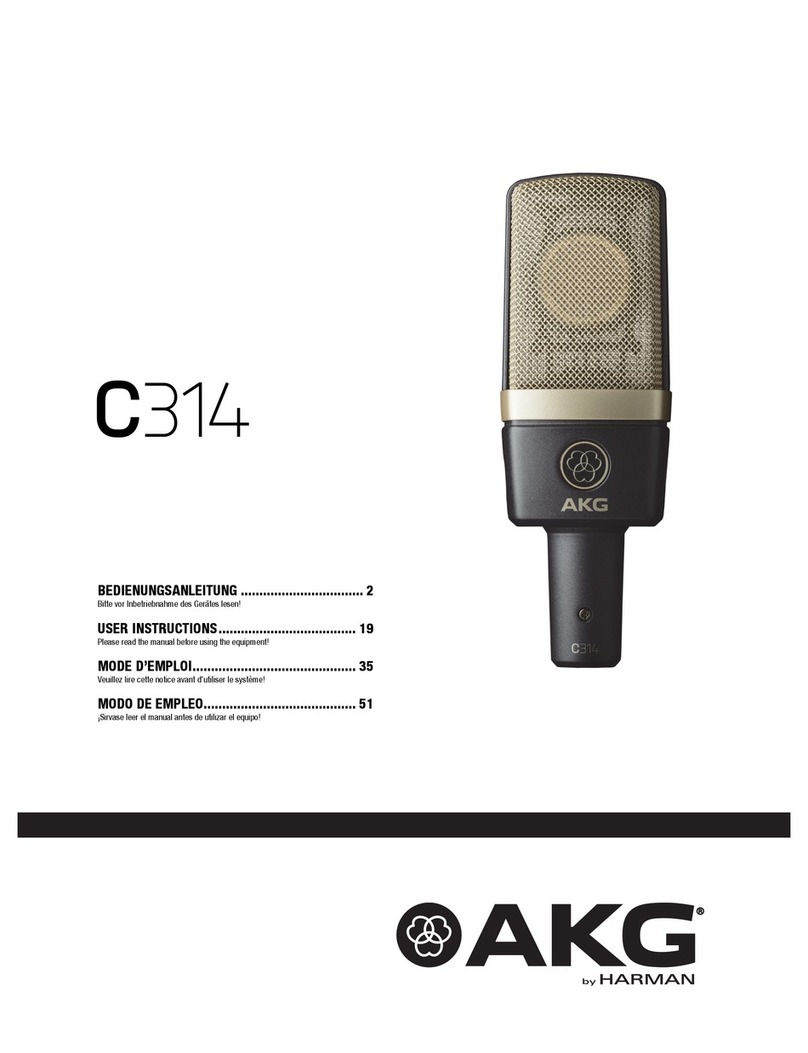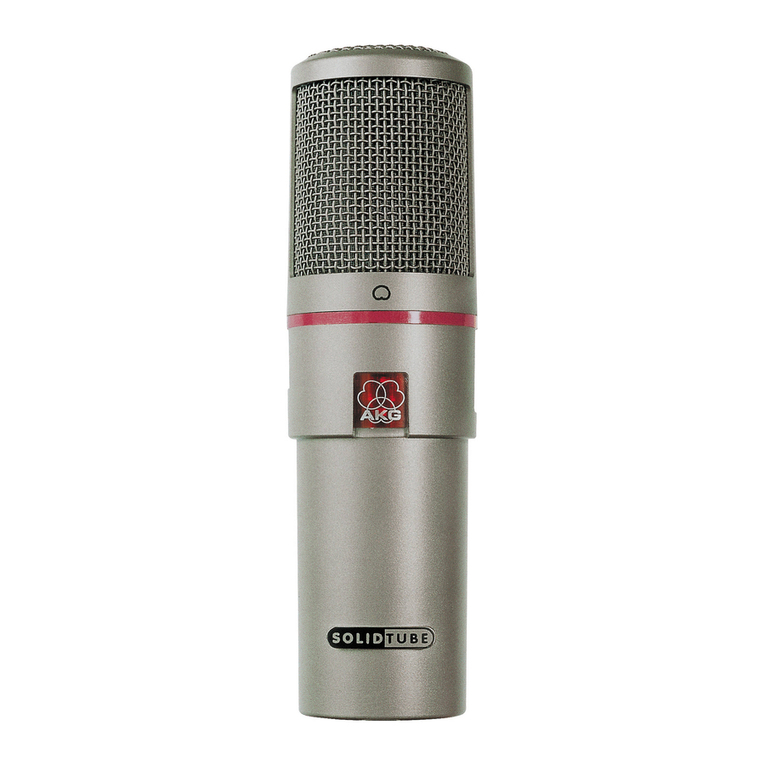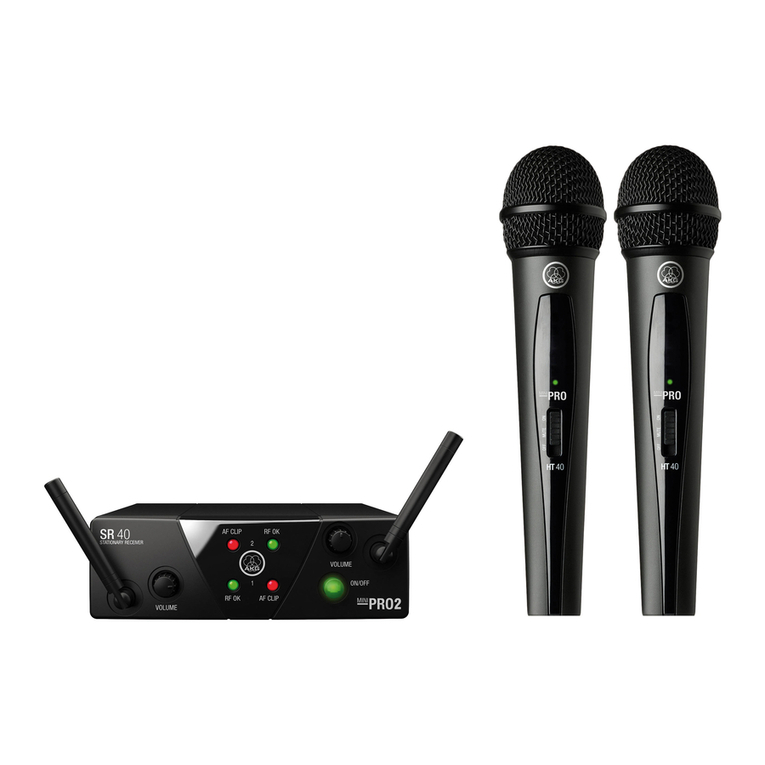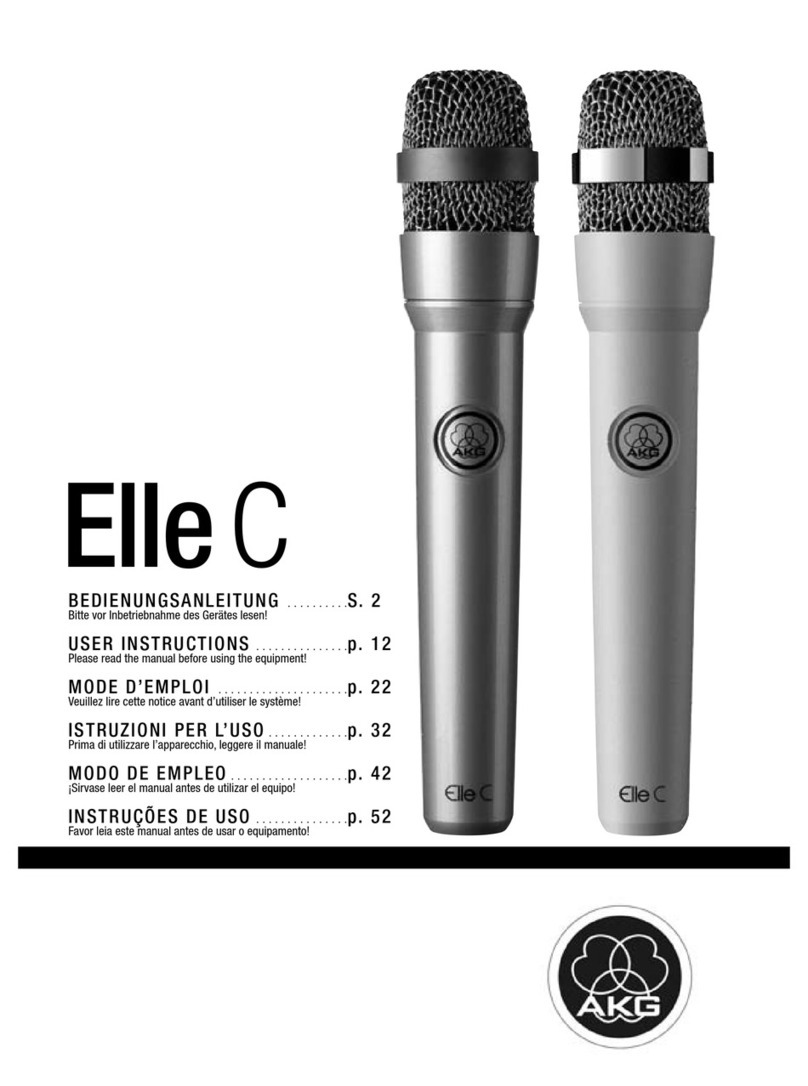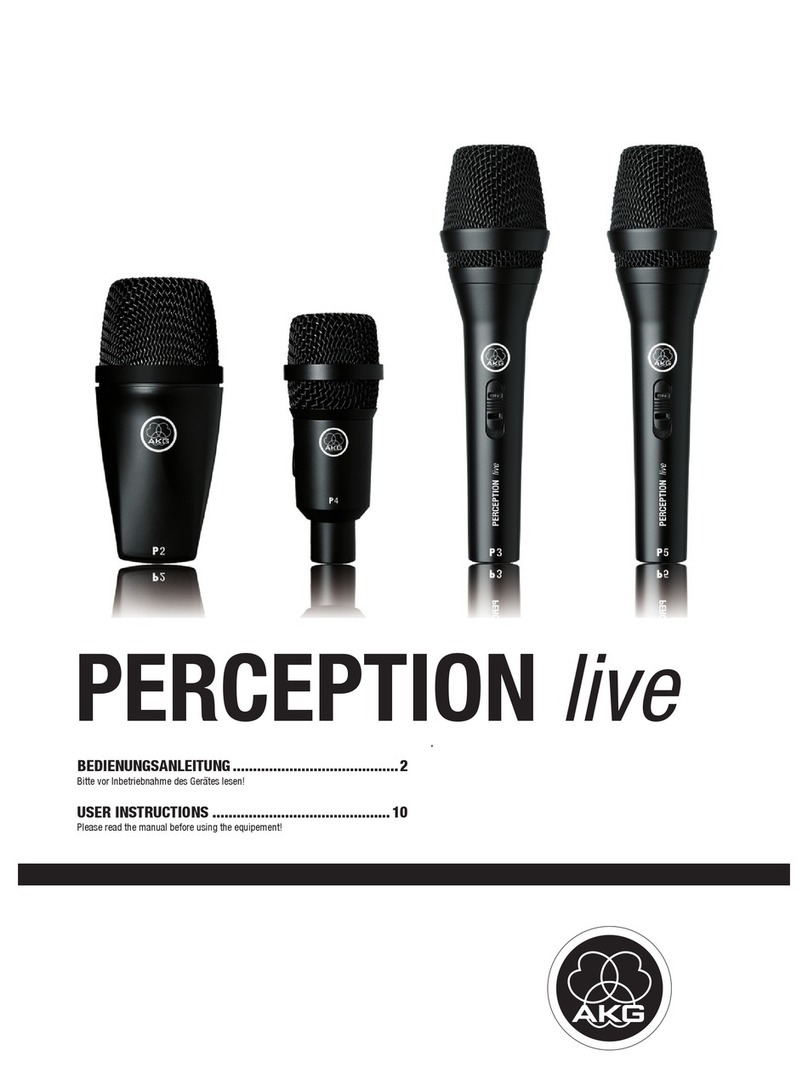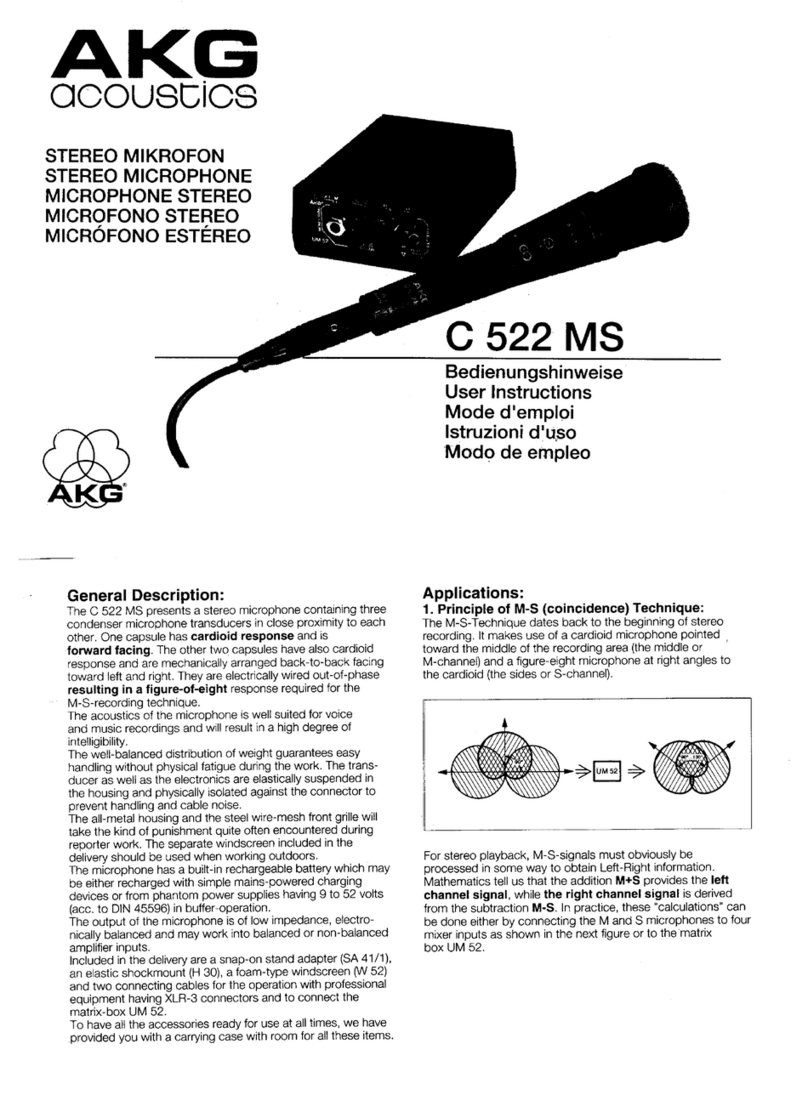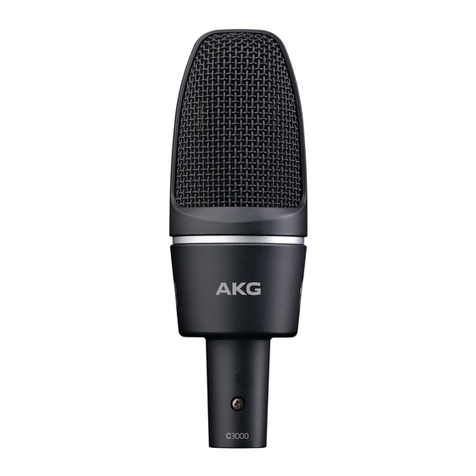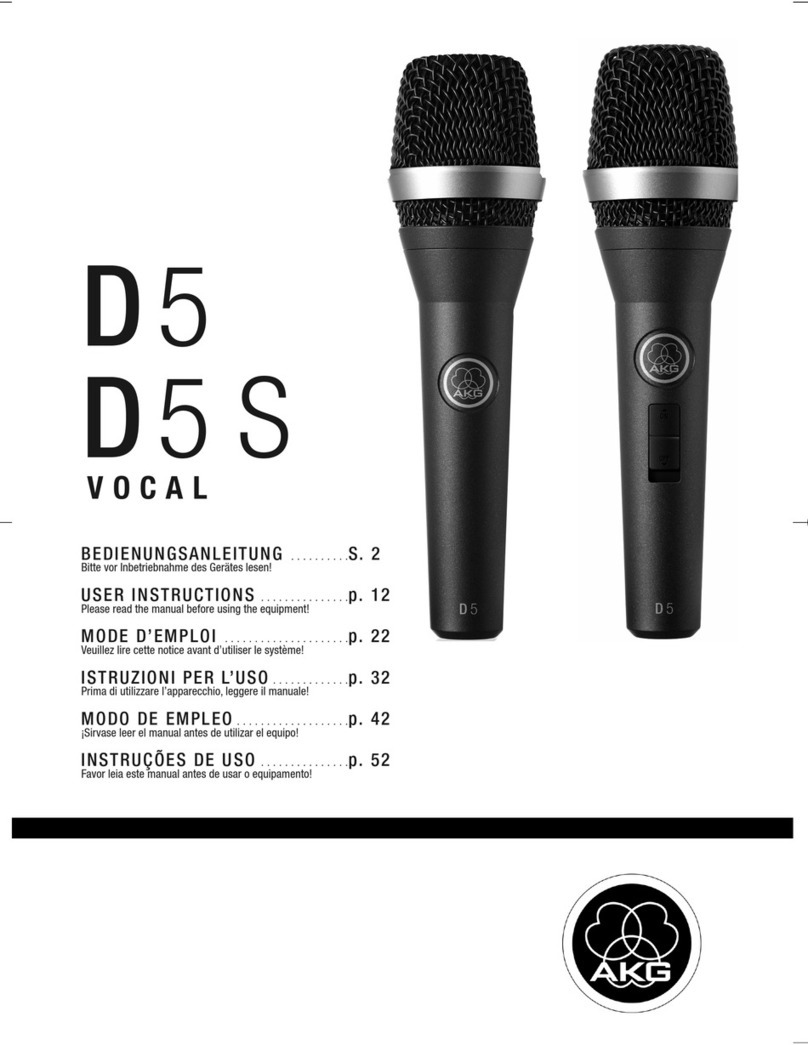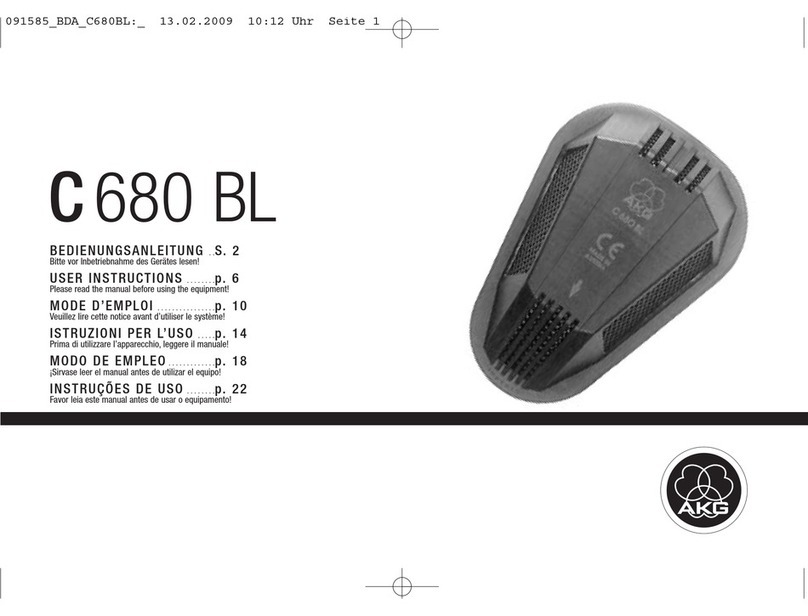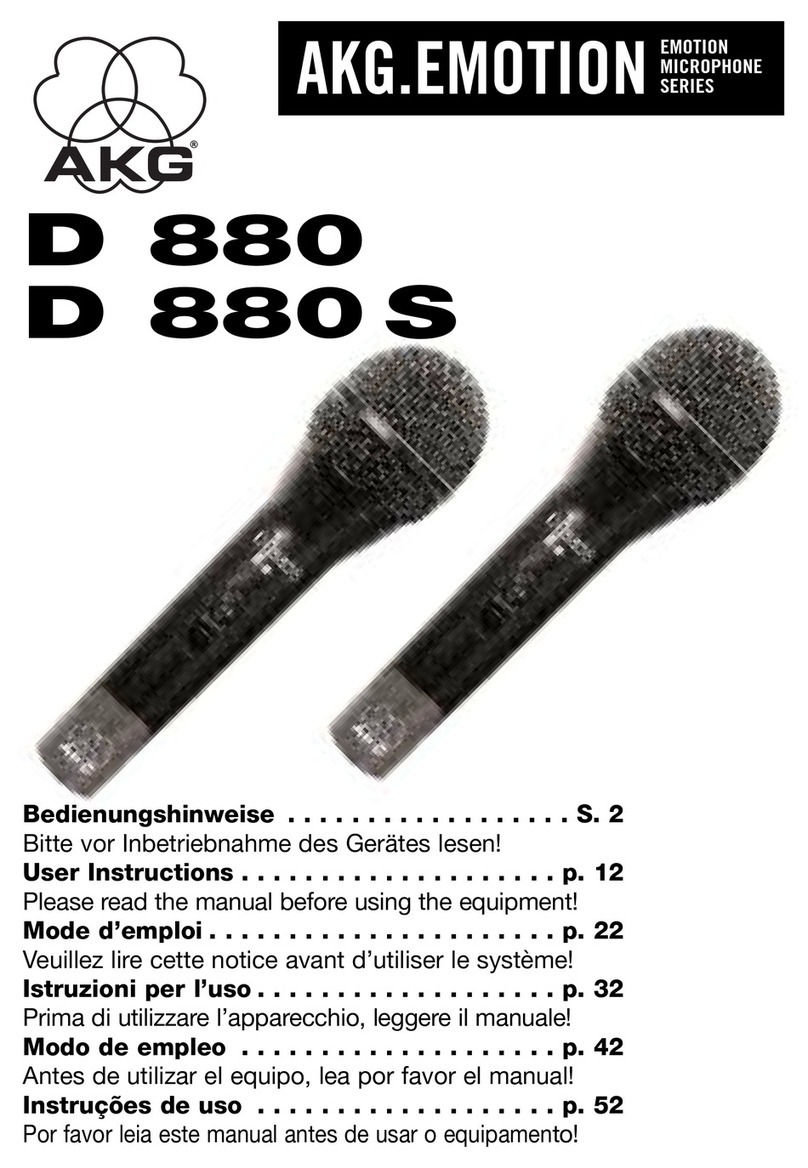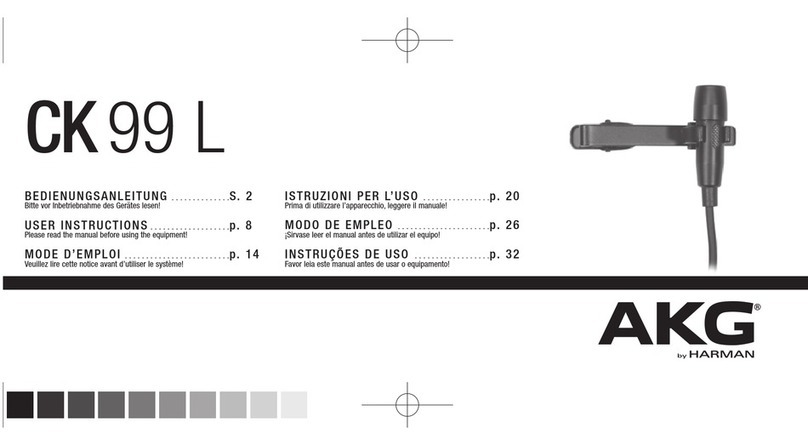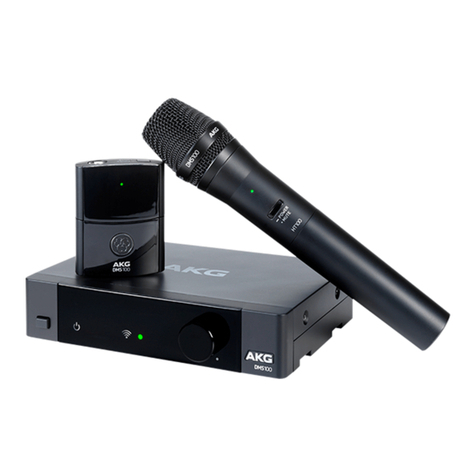3.1 Einleitung
3.2 Bespre-
chungsabstan
un Naheffekt
3.3 Schallein-
fallswinkel
Siehe Abb. 1.
Abb. 1: Typische
Mikrofonposition
Ein Gesangsmikrofon bietet Ihnen viele Möglich-
keiten, den Klang Ihrer Stimme, wie er durch die
Beschallungsanlage wiedergegeben wird, zu ge-
stalten.
Beachten Sie bitte die folgenden Hinweise, um Ihr
Mikrofon optimal einsetzen zu können.
Grundsätzlich wird Ihre Stimme umso voller und
weicher wiedergegeben, je kürzer der Abstand
zwischen den Lippen und dem Mikrofon ist. Grö-
ßere Mikrofondistanzen bewirken hingegen ein
halligeres, entfernteres Klangbild, da die Akustik
des Raumes mehr zur Geltung kommt.
Sie können daher Ihre Stimme aggressiv, neutral
oder einschmeichelnd klingen lassen, indem Sie
den Mikrofonabstand verändern.
Der Naheffekt tritt im Abstand von weniger als 5
cm von der Schallquelle auf und bewirkt eine
starke Betonung der Tiefen. Er verleiht Ihrer
Stimme einen voluminöseren, intimen, bassbe-
tonten Klang.
Singen Sie seitlich auf
das Mikrofon oder über
den Mikrofonkopf hin-
weg. So erhalten Sie ei-
nen ausgewogenen, na-
turgetreuen Klang.
Wenn Sie direkt von
vorne auf das Mikrofon
singen, werden nicht nur
Atemgeräusche mitüb-
ertragen, sondern auch Verschlusslaute (p, t) und
Zischlaute (s, sch, tsch) unnatürlich hervorgeho-
ben.
3 Anwendung
6AKG C 5
